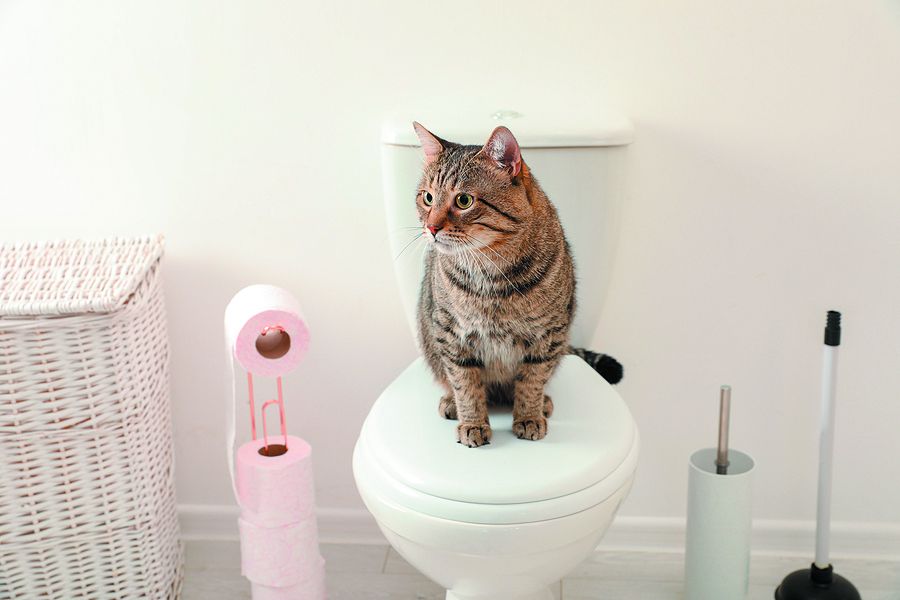Why Flushing Cat Poop Down Your Toilet Is Bad - Tips for Proper Handling
Why Flushing Cat Poop Down Your Toilet Is Bad - Tips for Proper Handling
Blog Article
They are making a few good points on the subject of How to Dispose of Cat Poop and Litter Without Plastic Bags in general in the content which follows.

Introduction
As feline owners, it's essential to bear in mind exactly how we get rid of our feline pals' waste. While it may appear convenient to purge feline poop down the toilet, this technique can have destructive repercussions for both the environment and human wellness.
Alternatives to Flushing
Thankfully, there are more secure and a lot more responsible means to get rid of pet cat poop. Think about the following options:
1. Scoop and Dispose in Trash
The most usual technique of disposing of pet cat poop is to scoop it into an eco-friendly bag and throw it in the garbage. Make certain to utilize a committed trash scoop and throw away the waste promptly.
2. Usage Biodegradable Litter
Opt for naturally degradable pet cat litter made from products such as corn or wheat. These litters are environmentally friendly and can be securely taken care of in the garbage.
3. Hide in the Yard
If you have a backyard, consider hiding feline waste in a designated location away from veggie yards and water sources. Make certain to dig deep sufficient to prevent contamination of groundwater.
4. Mount a Pet Waste Disposal System
Buy an animal waste disposal system particularly developed for pet cat waste. These systems utilize enzymes to break down the waste, reducing smell and environmental influence.
Health and wellness Risks
Along with environmental issues, purging feline waste can additionally present health dangers to humans. Pet cat feces may consist of Toxoplasma gondii, a parasite that can trigger toxoplasmosis-- a potentially serious health problem, particularly for expectant women and people with weakened immune systems.
Ecological Impact
Flushing feline poop introduces dangerous pathogens and parasites into the water system, posing a considerable threat to aquatic ecological communities. These contaminants can adversely influence marine life and concession water top quality.
Conclusion
Accountable animal possession expands beyond supplying food and sanctuary-- it also includes correct waste management. By refraining from purging pet cat poop down the toilet and choosing different disposal methods, we can lessen our ecological impact and safeguard human health and wellness.
Why Can’t I Flush Cat Poop?
It Spreads a Parasite
Cats are frequently infected with a parasite called toxoplasma gondii. The parasite causes an infection called toxoplasmosis. It is usually harmless to cats. The parasite only uses cat poop as a host for its eggs. Otherwise, the cat’s immune system usually keeps the infection at low enough levels to maintain its own health. But it does not stop the develop of eggs. These eggs are tiny and surprisingly tough. They may survive for a year before they begin to grow. But that’s the problem.
Our wastewater system is not designed to deal with toxoplasmosis eggs. Instead, most eggs will flush from your toilet into sewers and wastewater management plants. After the sewage is treated for many other harmful things in it, it is typically released into local rivers, lakes, or oceans. Here, the toxoplasmosis eggs can find new hosts, including starfish, crabs, otters, and many other wildlife. For many, this is a significant risk to their health. Toxoplasmosis can also end up infecting water sources that are important for agriculture, which means our deer, pigs, and sheep can get infected too.
Is There Risk to Humans?
There can be a risk to human life from flushing cat poop down the toilet. If you do so, the parasites from your cat’s poop can end up in shellfish, game animals, or livestock. If this meat is then served raw or undercooked, the people who eat it can get sick.
In fact, according to the CDC, 40 million people in the United States are infected with toxoplasma gondii. They get it from exposure to infected seafood, or from some kind of cat poop contamination, like drinking from a stream that is contaminated or touching anything that has come into contact with cat poop. That includes just cleaning a cat litter box.
Most people who get infected with these parasites will not develop any symptoms. However, for pregnant women or for those with compromised immune systems, the parasite can cause severe health problems.
How to Handle Cat Poop
The best way to handle cat poop is actually to clean the box more often. The eggs that the parasite sheds will not become active until one to five days after the cat poops. That means that if you clean daily, you’re much less likely to come into direct contact with infectious eggs.
That said, always dispose of cat poop in the garbage and not down the toilet. Wash your hands before and after you clean the litter box, and bring the bag of poop right outside to your garbage bins.
https://trenchlesssolutionsusa.com/why-cant-i-flush-cat-poop/

As a fervent person who reads on Don’t flush cat feces down the toilet, I assumed sharing that portion was sensible. Sharing is caring. You won't know, you may just be helping someone out. I truly appreciate reading our article about Can You Flush Cat Poop Down The Toilet?.
Check It Out Report this page